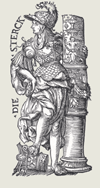
|
The honour of being the earliest printmaking technique belongs to woodcut . As early as the 6th century, in connection with the spread of Buddhism, prayer texts came to be multiplied by means of wooden stamps in China. Woodcut reached Europe in connection with the spread of papermaking skills in the 14th century. As bookprinting was introduced in the mid-15th century, the illustrating of books with woodcuts began, and by the end of the century the woodcut technique had developed into an independent form of art. The use of woodcut reached its culmination at the turn of the 15th and 16th centuries, when several prominent painters such as Albrecht Dürer (1471–1528), Lucas Cranach the Elder (1472–1553), and Hans Holbein the Younger (1497–1543) got interested in multiplying images by means of a block of wood. In the second half of the 16th century, as a result of the use of the new printmaking techniques (copper engraving and etching), woodcut remained just a means of illustrating cheap popular books. In luxury editions, woodcut was only used for making vignettes and initials, while illustration plates were made in copper engraving.
| 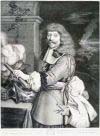
|
Copper engraving developed out of goldsmithing obviously first in Southern Germany in the early 15th century and soon spread to Italy and the Netherlands. Engraving in a copper plate made it possible for the artist to depict the image in a greater degree of detail by means of a flexible outline and a richly shaded surface striping. The technique reached technical perfection as early as in the works of Martin Schongauer (1430–1491) and Albrecht Dürer. The 16th century saw copper engraving develop into the most frequent method of multiplication. It was adopted in many Western European countries, particularly in Italy and France, where it was mostly used for copying both old and contemporary paintings.
| 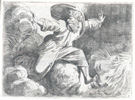
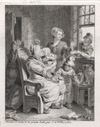
|
In the early 16th century, a method of etching the plate by means of an acid was discovered, which made it easier to draw the preparatory outlines onto the plate. The first experiments in etching the iron plate were made by the Augsburg armourer Daniel Hopfer (c. 1470–1536). In art, the etching technique was first used by the Swissman Urs Graf (c. 1485–1527/28), whose picture from 1513 is considered the first work of art in this technique. The triumph of etching began with the adoption of the copper plate by the German artist Albrecht Altdorfer (c. 1480–1538) in 1519, and by the end of the century etching had spread all over Europe. Together with copper engraving, it became the most popular technique, which reached its culmination in the works of Rembrandt (1606–1669). The drypoint technique, introduced in the late 15th century, was at first used to give more precision to the copper engraving and etching lines (Dürer and Rembrandt).
| 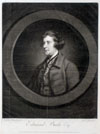
|
Around the mid-17th century, Ludwig von Siegen (1609–1680?) invented the mezzotint technique, which, with its smooth transition of black and white tones, allowed the precise depiction of the shades of colouring used in paintings. It became particularly popular in 18th-century England, where printmaking was otherwise relatively little employed, and therefore earned the additional name la manière anglaise.
| 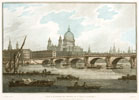
|
In the mid-18th century, the Frenchman Jean Baptiste Le Prince (1734–1781) invented the aquatint technique. The grainy surface of the plate made by etching was particularly suitable for copying the gritty lines of crayon drawings. Aquatint also enabled the artists to produce coloured prints, which was not possible for copper engraving with its mostly linear approach.
| 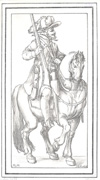 |
Nearly half a century later, Alois Senefelder (1771–1834) invented the method of producing prints from a stone plate — lithography , and founded his own workshop in Munich, Germany. Compared with earlier printmaking techniques, lithography made it possible for the artist to produce results more easily and quickly, and the number of prints was unlimited. The new technique spread widely and was used for printing publications with large editions in the 19th century.
|
|





